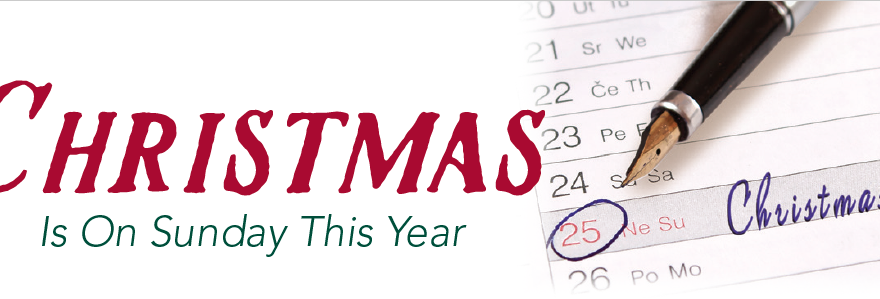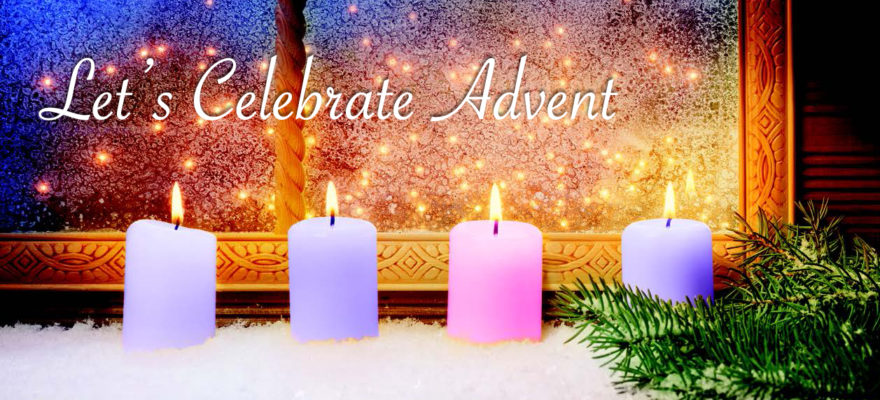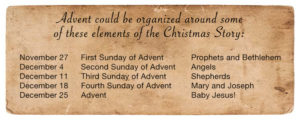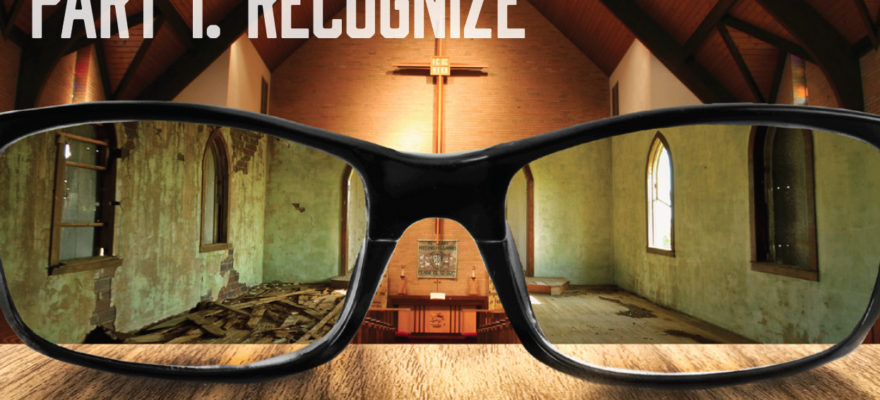By Franklin Dumond – Director of Congregational Ministries
It happens only infrequently in the life of the church and the professional career of the pastor but Christmas does come on Sunday once in awhile. When this happens special plans should be made to keep the spiritual impact of the season and to support the witness of the church as expressed in its worship schedule.
This infrequent event occurs once again Sunday, December 25, 2016.
Many Christian churches have established traditions for Christmas Eve services, yet only a few offer Christmas Day services. In our culture Christmas Day is a secular celebration of surprise gifts and family celebrations very distant from most religious traditions.
Across the years, as a local church pastor, I tried many approaches to Christmas on Sunday and then I found one approach that worked best.
Early in my tenure as pastor, I took the approach that Sunday was a sacred day of worship no matter if Christmas or other holidays happened to arrive on that day of the week.
My approach in those days was one of denial, something like: “If I don’t admit it is a holiday we can have ‘church’ as usual.” With a generous amount of guilt along with some promotion of the schedule I found I could gather a little less than ½ of my congregation on Christmas Day if we kept our ‘usual’ schedule.
I have since come to believe that the attitude I held then was one of “They know where the church is so there’s no excuse for not coming.” I have also come to realize that this attitude is not conducive to church growth!
A second approach I took to Christmas on Sunday was one of adjusting the morning schedule. By working with/ through the Church Council we arranged a morning fellowship 30 minutes before the morning worship service. This adjusted schedule resulted in a little more than ½ of the regular attendance on this special day.
Then the next time Christmas came on Sunday I found an approach that worked best. We arranged and promoted two options for Christmas Worship. The first option was a Christmas Eve Service. The second was a Christmas Day Service. By offering these two options I found about ½ of the congregation came on Saturday evening and about ½ came on Sunday morning so that our combined attendance was the ‘usual’ number. With two options family and church celebrations were balanced and everyone felt good about the holiday being both a religious and a family celebration.
To fully reap the benefits of this approach the Christmas Eve Service must become more than the Candlelight Communion so often offered then. When elements of morning worship like special music, the Advent Wreath, tithes and offerings, Christmas sermon, etc. are combined with Christmas Eve communion a meaningful service of worship is offered for the church family and for the community.
Christmas worship on Sunday morning may need a bit different schedule. Perhaps the church that offers multiple services will offer “One Grand Celebration” or perhaps Christmas worship will be scheduled at the Sunday School hour to accommodate family gatherings at midday.
By finding a schedule that will work and by effectively communicating it to the church family and to the community, Christmas worship can be a celebration with a large crowd rather than the depressed assembling of a few faithful saints.
Now about the guy in the red suit coming to church on Christmas…
-
If he does come, let him come to the fellowship hall or to a location outside the building and make sure he comes after, not during, worship celebrations. Remember Jesus is the Reason for the Season.
-
If he comes on Christmas weekend have him come after the Christmas Eve Service in the fellowship hall or on the church lawn. Let him go back to the North Pole for Christmas Day!


 Advent is the season marked by the four Sundays before December 25, climaxing with Christmas Day and the wonderful good news, “unto you is born a Savior which is Christ the Lord.”
Advent is the season marked by the four Sundays before December 25, climaxing with Christmas Day and the wonderful good news, “unto you is born a Savior which is Christ the Lord.”